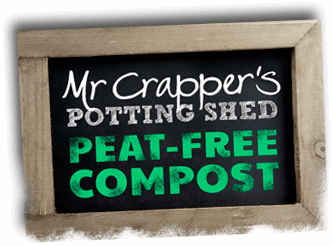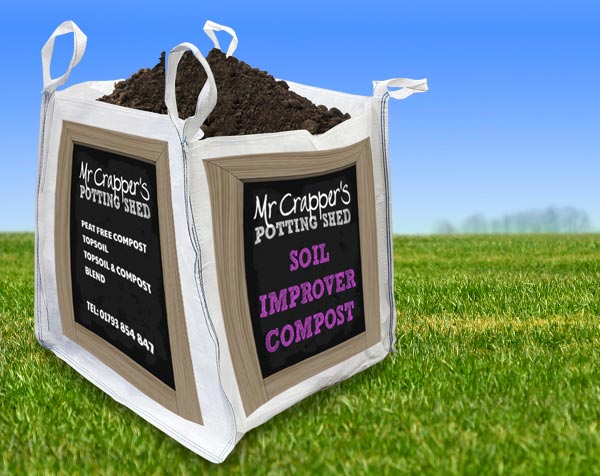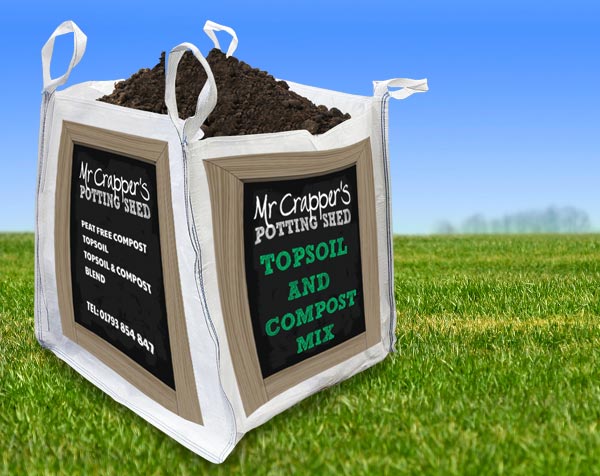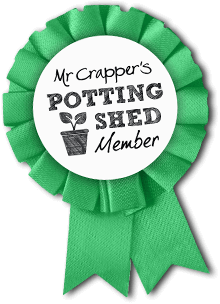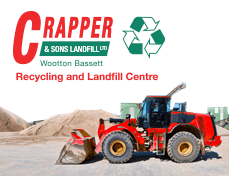Guide to Planting with Compost
Ensure that you mix compost with soil, use the following instructions:
- Flower and Vegetable Beds
- Apply 25–50mm (1-2 inches) and fork in gently
- For poor soil (or beds that have had intensive planting) dig it in to a depth of 150mm (6 inches)
- Hanging Baskets, Potting and Bedding Plants
- Mix 1 part compost with 3 parts soil or growing media for best results
- Trees and Shrub Planting
- Mix 2 parts soil to 1 part compost and line the base of the hole with 50mm of the soil/compost mix
- Place the shrub or sapling in the centre of the hole, back fill with the remainder of the material and firm down
- Turf and Lawns
- Apply 25-50mm (1-2inches) of compost to the prepared area and dig it in to a depth of 100mm (4 inches)
- To revitalise your lawn, simply aerate the turf (make holes with a fork) then sprinkle a fine layer of compost on top and rake or brush it in so that the particles get through the grass to the soil
Recommended Coverage
| Compost Amount | Depth | Coverage |
|---|---|---|
| 1 Cubic Metre | 25mm (1") | 40m2 |
| 1 Cubic Metre | 50mm (2") | 20m2 |
| 1 Cubic Metre | 75mm (3") | 13m2 |
| 1 Cubic Metre | 100mm (4") | 10m2 |
| 1 Cubic Metre | 150mm (6") | 6.5m2 |
| 1 Cubic Metre | 200mm (8") | 5m2 |
How to use Mr Crappers Soil Improver Compost
When taking cuttings
Mr Crapper’s Compost can be used successfully for the majority of stem cuttings. It is important to keep it moist at this stage.
The mother plant must be watered the day before the cuttings are taken. Mixing the compost with sharp sand sometimes promotes rooting and this should be considered.
Your cuttings should be taken with a sharp knife, and potted on when they have produced a healthy root system.

Seeds
If sowing fine seeds, you may need to sieve the mixture of 1 part compost and 3 parts soil before use. Place the compost in a seed tray and water it thoroughly before allowing it to drain.
Ensure that the seeds are sown evenly over the surface, and then cover them lightly with compost (except when you have sown very small seeds).
After sowing, re-water, then cover the tray to retain moisture and control the temperature until the seeds germinate. Some seeds may germinate more slowly in Peat-Free compost than they might otherwise.
When the seeds have germinated, uncover the tray, and make sure that it is placed in daylight but not direct sunlight.
After the first true leaves have appeared, prick the seedlings out into separate containers.
Potting
Fill the pots with a mixture of 1 part compost to 3 parts soil, and then make holes with a dibber or similar. Handle seedlings and cuttings carefully, holding them by the leaves, when placing them in the holes.
Press the compost down around the seedlings and water them well. Be careful when potting, as over-handling can damage fragile roots.
For larger cuttings, half fill a pot with compost, place the young plant centrally, fill around the root ball and press around the plant. Water well.

Re-potting
Potting on should be carried out when the plant is growing actively – eg, spring to early summer. Water the plant initially and allow it to drain, then turn the pot upside down and knock its base or side, to loosen the plant and remove it.
Put a layer of 1 part compost and 3 parts soil into the larger pot.
Fill the space around the plant, and press down gently around the root ball before watering gently.
For optimum growing conditions, when using Mr Crapper’s Potting Shed Peat-Free Compost for Potting and Bedding Plants, Seeds, Cuttings and Hanging Baskets; Mix 1 part compost to 3 parts soil.
Storage Notes
During storage, sometimes a white mould may appear on the compost, please be aware that this is not harmful to plants or humans.
Simply complete our online form and a member of staff will get back to you to confirm your delivery request.
